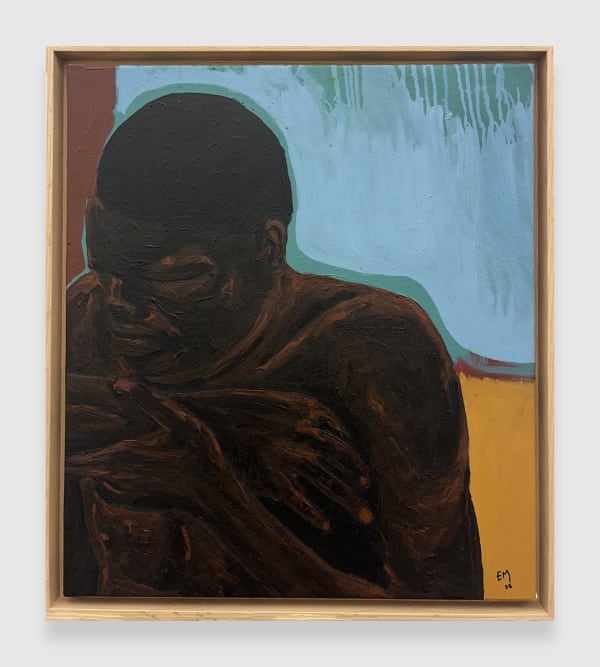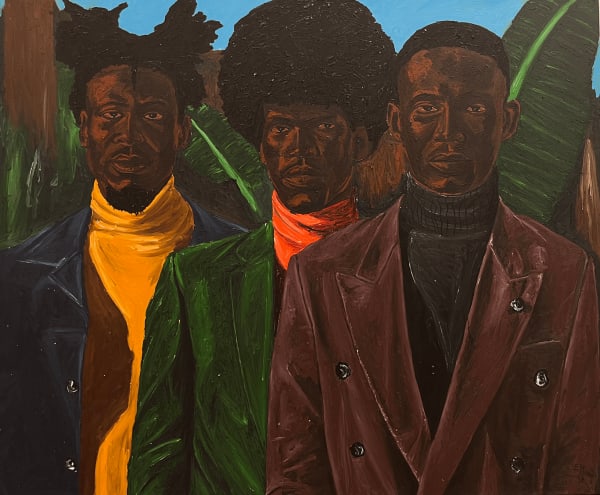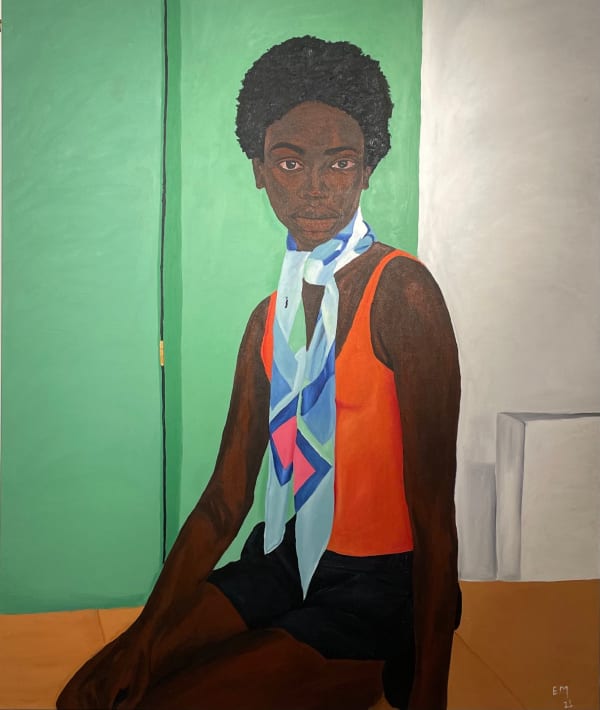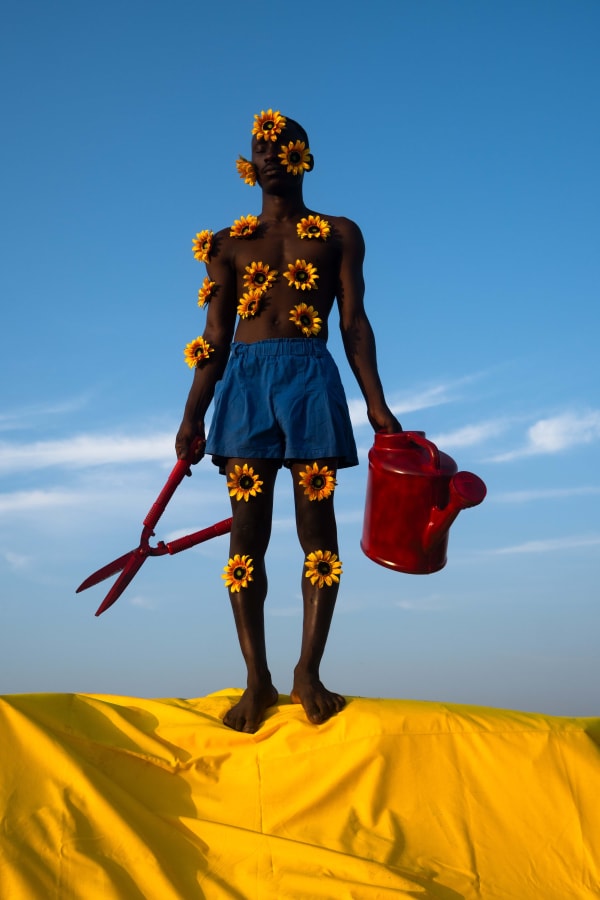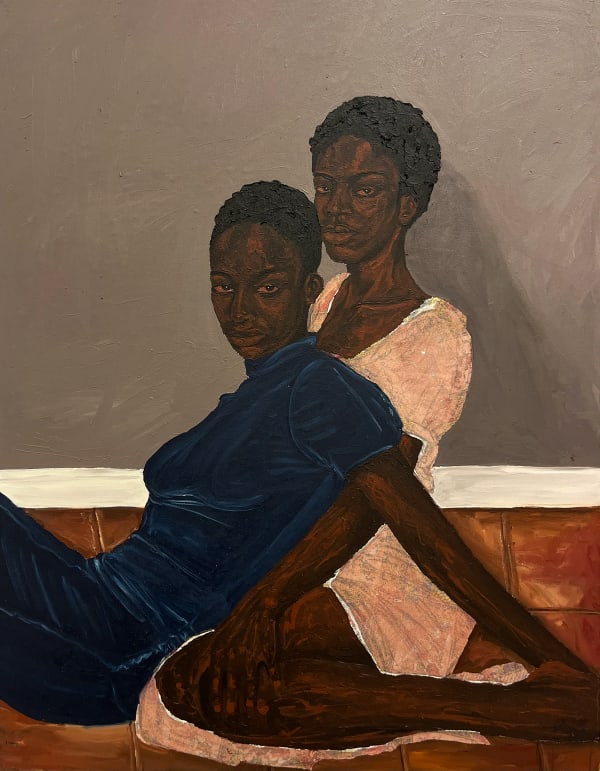Matthew Eguavoen
MATTHEW EGUAVOEN EST NÉ EN 1988 DANS L'ÉTAT D'EDO AU NIGERIA. IL VIT ET TRAVAILLE À LAGOS.
Matthew Eguavoen a fréquenté l'université de Port Harcourt, où il a obtenu une licence en sciences pour le génie civil et les structures. C’est au cours de sa dernière année à l'université qu’il a décidé de poursuivre sa passion pour l’art. Il a ainsi appris et développé par lui-même sa pratique artistique.
Peintre autodidacte, il se tourne vers la figuration et réalise principalement des portraits à partir de peinture à l'huile, de peinture acrylique, de fusain et de crayon de graphite. Il documente ainsi l’histoire de ses modèles en mettant l’accent sur leurs émotions et leur attitude. Matthew Eguavoen aborde dans son travail des enjeux sociétaux, économiques et politiques à travers l'intersectionnalité complexe à laquelle les Nigérians sont confrontés au cours de leur vie. Il s’intéresse notamment à la contrainte de l'idéologie sociale, l'existence humaine et la survie.
En tant qu'artiste, il est profondément touché par l'impact que peut avoir son travail sur son environnement immédiat et sur le monde en général. En sens, il s’intéresse à comment les déséquilibres sociétaux, politiques et économiques prennent le dessus sur le bonheur humain et gangrènent l'essence de la société.
Les œuvres de Matthew Eguavoen figurent dans des collections en Afrique de l'Ouest, aux États-Unis, en Europe et en Amérique du Nord.
-
 Glory in the Dust, 2025
Glory in the Dust, 2025 -
 The Ritual of Reclamation I, 2025
The Ritual of Reclamation I, 2025 -
 The Ritual of Reclamation II, 2025
The Ritual of Reclamation II, 2025 -
 I still have faith in the midst of Everything, 2023
I still have faith in the midst of Everything, 2023 -
 In the end nothing and everything matters, 2023
In the end nothing and everything matters, 2023 -
 The Silence After The Conversation, 2023
The Silence After The Conversation, 2023 -
 Lean on me, 2023
Lean on me, 2023 -
 Amidst the Divide , 2022
Amidst the Divide , 2022 -
 Behind Every successful Adam, 2021
Behind Every successful Adam, 2021 -
 Chi akpóóla (Chi has called), 2022
Chi akpóóla (Chi has called), 2022 -
 Conversations we must have , 2022
Conversations we must have , 2022 -
 I Can’t give what you’re asking in exchange for mentorship, 2021
I Can’t give what you’re asking in exchange for mentorship, 2021 -
 I made my Home Here, 2022
I made my Home Here, 2022 -
 I Was my parents' flower girl, 2021
I Was my parents' flower girl, 2021
-
ARE WE GOING SOMEWHERE OR JUST GOING
3 Juillet - 9 Août 2025Dans la brume estivale, la frontière se brouille entre le voyage et l’errance. L’exposition invite à explorer cet état de suspension, cet entre-deux : entre deux échanges, entre la nuit...Lire plus -

Inhabiting the World
Group Show 4 Juillet - 10 Août 2024Du 4 juillet au 10 août, la galerie AFIKARIS accueille sa traditionnelle exposition collective d'été. Cette année, "Inhabiting the World" dévoile les oeuvres de douze artistes et approche la complexité de l'être humain à travers sa relation au monde.Lire plus -

Ukhurhę
Matthew Eguavoen 21 Mars - 4 Mai 2024La seconde exposition personnelle de l'artiste nigérian Matthew Eguavoen à Paris se tiendra du 21 mars au 27 avril à la galerie AFIKARIS. Cette nouvelle série d'œuvres, rassemblées sous le titre Ukhurhę, évoque la dépression et regrette que la santé mentale ait longtemps été - et continue d’être – négligée, stigmatisée et invisibilisée sur le continent africain.Lire plus -

Classique!
Group show 16 Juillet - 17 Septembre 2022Nous sommes ravis d'annoncer l'ouverture de notre nouvel espace parisien situé au 7 rue Notre-Dame-de-Nazareth, 75003 Paris. L'exposition inaugurale Classique !, - avec des œuvres de - Moustapha Baidi Oumarou, Matthew Eguavoen, Salifou Lindou, Omar Mahfoudi, Richard Mensah, Ousmane Niang, Jean-David Nkot, Nana Yaw Oduro, Hyacinthe Ouattara, Daniel Pengrapher et Marc Posso - elle se déroulera du 16 juillet au 17 septembre.Lire plus
-

Egbé Okpá
Matthew Eguavoen 2 Avril - 3 Mai 2022Les portraits de Matthew Eguavoen mettent en scène ses réflexions sur la société nigériane. Il y explore tour à tour des problématiques sociales, économiques et politiques à travers le regard...Lire plus
-
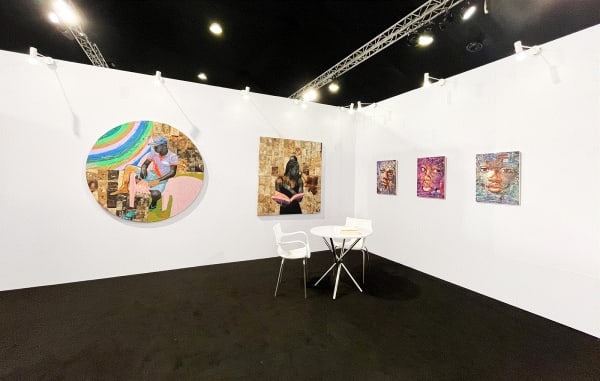
Art X Lagos
Lagos | Nigeria 4 - 6 Novembre 2022ARTISTES EXPOSÉS : Matthew Eguavoen Emma Odumade Jean David Nkot Ousmane NiangLire plus -
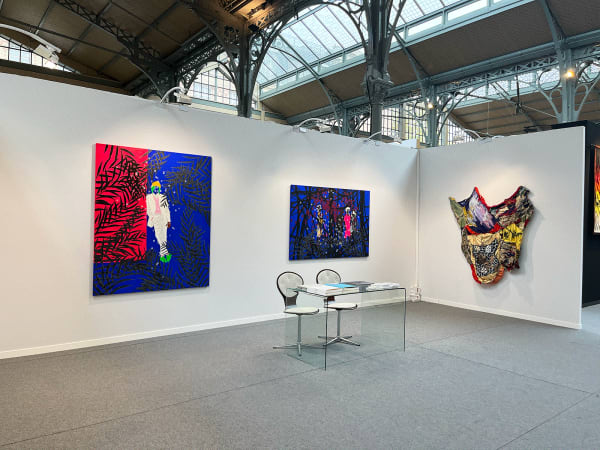
AKAA
Paris | France 21 - 23 Octobre 2022ARTISTES EXPOSÉS : Matthew Eguavoen Jean David Nkot Moustapha Baidi Oumarou Hyacinthe OuattaraLire plus -
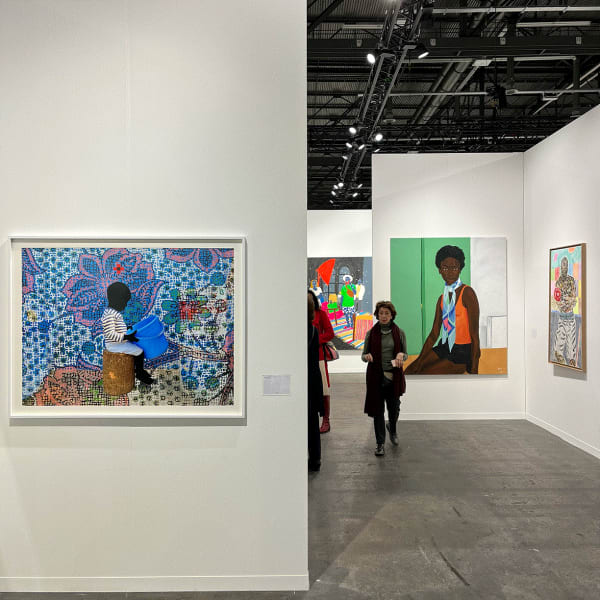
Art Genève
Genève | Suisse 3 - 6 Mars 2022ARTISTES EXPOSÉS : Matthew Eguavoen Moustapha Baidi Oumarou Omar Mahfoudi Saïdou Dicko Salifou LindouLire plus -
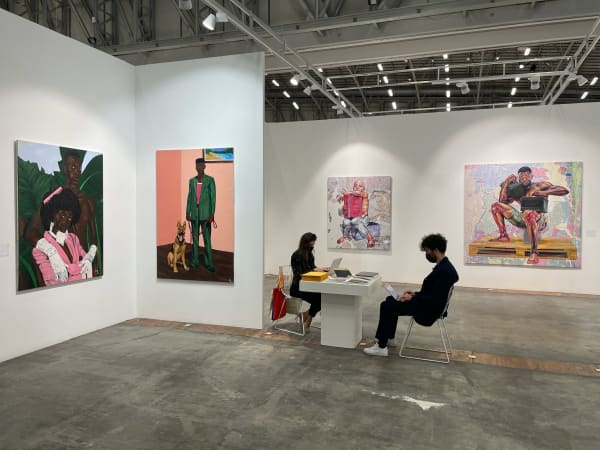
Investec Cape Town
Le Cap | Afrique du Sud 18 - 20 Février 2022ARTISTES EXPOSÉS : Salifou Lindou Jean David Nkot Crystal Yayra Anthony Matthew Eguavoen Ousmane NiangLire plus


